In textiles, an exceptional fabric known as barkcloth emerges with a storied past and distinct characteristics.
Crafted from the inner bark of trees such as paper mulberry, ficus, and elm, this non-woven cloth carries a rough texture akin to its namesake.
With roots reaching back to prehistoric times, barkcloth’s rich history predates the invention of weaving. Diverse indigenous cultures embrace it and find a place in traditional clothing, home decor, and sacred ceremonies.
Its sustainable production methods, cultural significance, and unique visual appeal intrigue enthusiasts and artisans alike, making barkcloth a timeless testament to human ingenuity and reverence for nature.
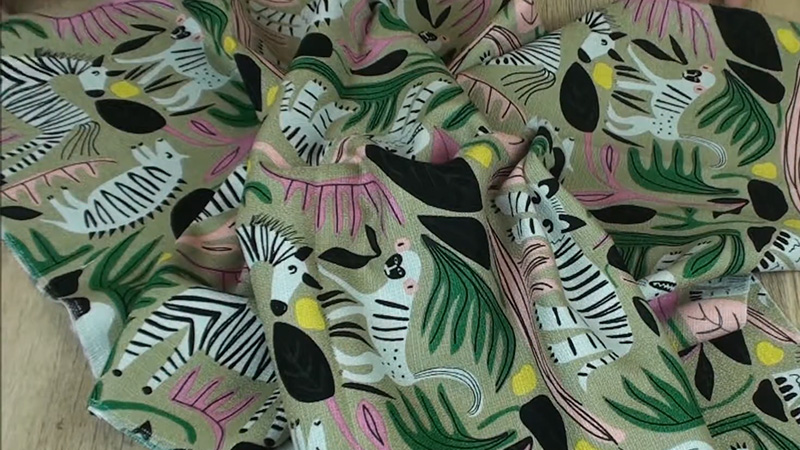
What is Barkcloth Fabric?
Barkcloth is a unique non-woven fabric created through an ancient process. It involves stripping, soaking, and beating the inner bark of trees like paper mulberry, ficus, and elm.
The laborious technique produces a sturdy yet flexible material with a distinctive texture and natural appearance.
The barkcloth has a rich cultural heritage and has been used for centuries by indigenous communities for clothing, home decor, and religious ceremonies.
This eco-friendly fabric reflects a sustainable approach to textiles, showcasing the harmonious relationship between humans and nature.
Its remarkable attributes make barkcloth a captivating and environmentally-conscious choice in modern design and fashion.
History of Barkcloth
The history of barkcloth dates back centuries and is deeply rooted in the culture of the Baganda people in the Buganda kingdom of southern Uganda.
This ancient craft involves skilled artisans from the Ngonge clan, led by a hereditary chief craftsman known as kaboggoza.
For generations, they have been producing barkcloth for the Baganda royal family and the broader community. The craft’s significance is interwoven with traditional ceremonies, attire, and daily life.
Barkcloth’s enduring legacy showcases the Baganda people’s cultural heritage and artistic ingenuity, making it a cherished symbol of their identity and history.
How to Identify Barkcloth?
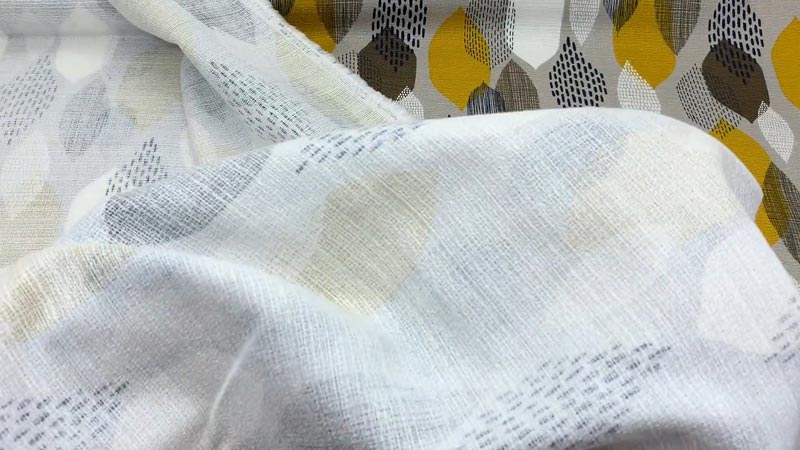
Identifying barkcloth, a type of fabric made from the inner bark of certain trees, can be done through a few key characteristics:
Texture
Gently feel the fabric’s surface. True barkcloth will have a slightly rough and textured feel, akin to the roughness of tree bark. The texture is an essential characteristic that sets it apart from other fabrics.
Thickness
The barkcloth is typically thicker and more substantial than many other fabrics. The densely woven cotton fibers give it a sturdy and robust feel, adding to its unique tactile qualities.
Appearance
Examine the fabric closely for any visible patterns or designs. Barkcloth often features simple and natural motifs inspired by nature, like leaves, flowers, or abstract shapes.
Vintage Characteristics
Authentic barkcloth is often associated with a vintage or retro aesthetic. If the fabric resembles mid-century designs, it might indicate true barkcloth.
Absence of Weave Lines
Unlike regular woven fabrics, barkcloth lacks visible weave lines due to its non-woven nature. Instead, it presents a more continuous and uniform texture.
Slight Give
When gently pulled, barkcloth will have a bit of give, similar to traditional handwoven fabrics. This suppleness is a result of the unique manufacturing process.
Fiber Content
Check the fabric label or consult with the seller to determine if the fabric is made of densely woven cotton fibers. While modern versions of barkcloth may use different materials, cotton is a common choice for its authentic feel.
Types of Barkcloth
There are several types of barkcloth, each originating from different regions and made from various tree barks. Here are some notable types:
Cedar Bark Textile
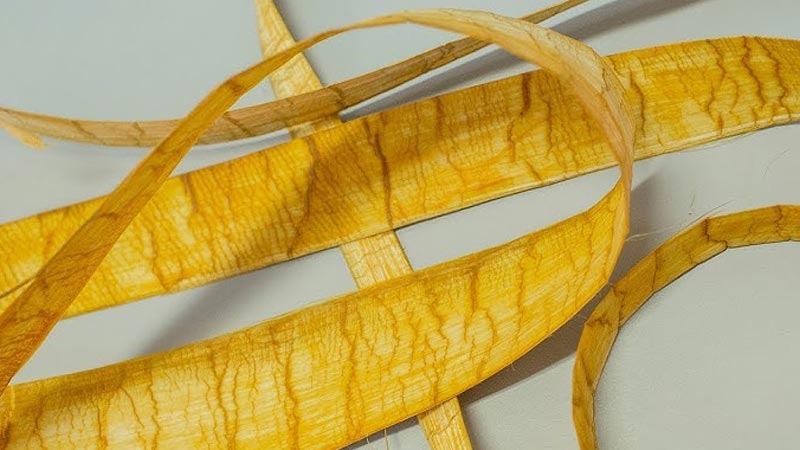
Cedar bark textile is a type of barkcloth made from the inner bark of cedar trees. Indigenous communities in the Pacific Northwest region of North America have historically crafted it.
The fibers are stripped, softened, and woven into beautiful, durable textiles for clothing, baskets, and ceremonial items.
Lacebark
Lacebark, or Lagetta, is a unique type of barkcloth derived from the Lagetta tree in tropical regions. The thin, paper-like bark is carefully peeled, sun-dried, and then processed into delicate, lace-like sheets.
These delicate and translucent materials have been traditionally used for clothing, decorative items, and artistic purposes.
Osnaburg
Osnaburg, though not a traditional barkcloth, resembles its appearance and texture. It is a durable, coarse fabric made from cotton and jute or flax fibers.
While not extracted from the bark of trees, its rough texture makes it akin to true barkcloth, and it has been used historically for upholstery, aprons, and sacks.
Tapa Cloth
Tapa cloth, also known as bark cloth in some regions, is a traditional fabric made from the inner bark of specific trees like the paper mulberry or breadfruit tree.
This type of barkcloth is widely crafted and used in Pacific island cultures. It is decorated with intricate patterns and employed for clothing, wall hangings, and cultural ceremonies.
Attush
Attush is a type of barkcloth traditionally crafted in parts of Africa, particularly among the Baganda people of Uganda.
Like other barkcloths, it involves stripping, soaking, and beating the inner bark of specific trees. It is then used for clothing, upholstery, and traditional ceremonies.
Bast Shoe
While not strictly a type of barkcloth, bast shoes are made from plant fibers extracted from the inner bark of trees, similar to traditional barkcloth.
These shoes have been historically crafted in various cultures worldwide due to the durability and natural properties of the bark fibers.
Bast Fibre
Bast fibers, derived from the inner bark of plants, include materials like hemp, flax, and jute.
Though not directly barkcloth, these fibers share similarities in their source and utilization, as they have been used for textiles and cordage in different cultures throughout history.
What is Barkcloth Made of?
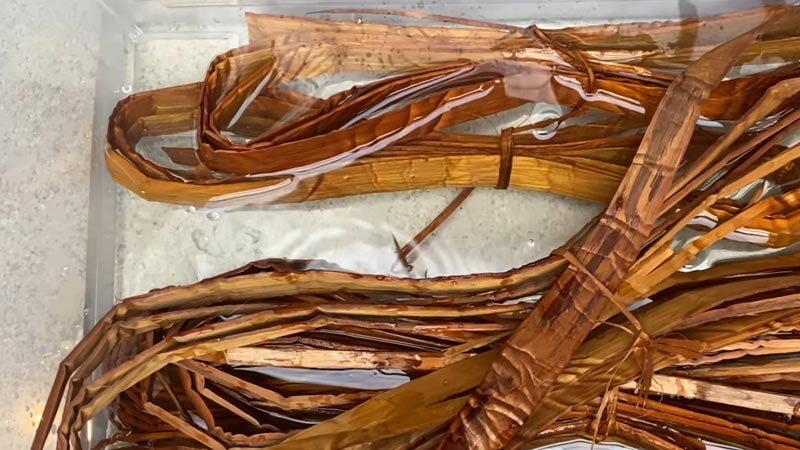
The barkcloth is made from the inner bark of specific trees, mainly the paper mulberry, ficus, and elm.
Here’s a step-by-step explanation of how it is produced
Bark Stripping
The first step in creating barkcloth involves carefully stripping the inner bark from mature trees, preferably from the branches or trunk. The outer bark is removed, revealing the softer inner layer used to make the fabric.
Soaking
Once the inner bark is collected, it is soaked in water to soften and break down the fibers. The soaking process can take several hours to a few days, depending on the type of bark and its thickness.
Fiber Separation
After soaking, the softened inner bark is further processed to separate the fibrous strands from other non-fiber materials. This can be done manually or using wooden mallets or stone beaters.
Beating
The separated fibers are beaten to enhance flexibility and create a cohesive, compacted material. The beating process involves striking the fibers repeatedly, usually on a flat surface like a wooden log or stone.
This step aligns and intertwines the fibers, forming the basis of the barkcloth fabric.
Joining the Strips
The beaten fiber strips are joined together using overlapping or felting. They are overlapped and pressed together, adhering the fibers to one another and creating a seamless fabric.
Drying
The newly formed barkcloth is then left to dry in the sun. The fibers bond even further as it dries, solidifying the fabric’s structure.
Embellishment (Optional)
Depending on the cultural traditions and intended use, barkcloth may undergo further embellishment. This can include adding decorative patterns or dyeing the fabric with natural pigments to enhance its aesthetic appeal.
What is Barkcloth Used for?
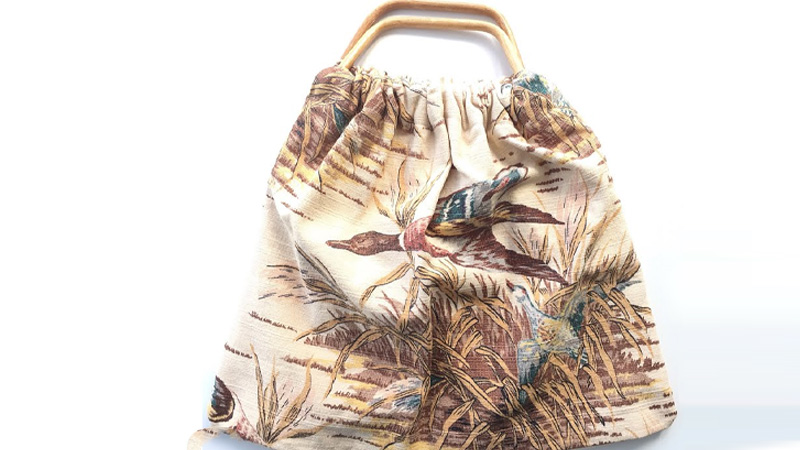
Barkcloth is a versatile fabric that has been used for various purposes throughout history. . .
Here’s a step-by-step explanation of its diverse applications
Traditional Clothing
Barkcloth has long been utilized to make traditional clothing in different cultures.
From simple garments like loincloths and skirts to more elaborate outfits for ceremonies and rituals, the barkcloth’s softness and durability make it suitable for wearable textiles.
Home Decor
Barkcloth is used for interior decoration, such as curtains, drapes, wall hangings, and upholstery. Its unique texture and natural appearance add a touch of warmth and authenticity to living spaces.
Ceremonial Items
In many indigenous cultures, the barkcloth holds significant spiritual and ceremonial value. It may be used to create sacred clothing or items in religious rituals, symbolizing the connection between the fabric, nature, and cultural heritage.
Art and Crafts
The barkcloth serves as a canvas for artistic expression. Artists paint or print intricate designs on the fabric, transforming it into pieces of art, which are often displayed or sold as decorative wall hangings or tapestries.
Household Items
Due to its durability, the barkcloth has been used to make various practical household items like bags, baskets, mats, tablecloths, and aprons.
Fashion and Accessories
Modern designers have also incorporated barkcloth into contemporary fashion and accessories. It can create unique garments, handbags, hats, and other fashionable accessories, showcasing the fabric’s timeless appeal.
Sustainable Products
As an eco-friendly fabric, barkcloth is gaining popularity among environmentally-conscious consumers. It is used to create sustainable and ethical products, aligning with eco-fashion principles and responsible consumption.
Cultural Preservation
Using bark cloth in modern times helps preserve cultural traditions and practices. By incorporating this fabric into various aspects of daily life, its significance and historical relevance are passed down through generations.
Is Bark Cloth a Textile?
Yes, bark cloth is considered a textile despite its non-woven nature. Artisans from Uganda’s traditional culture have been creating this unique fabric for generations, crafting it specifically for the royal family and the wider community.
The technique, dating back to prehistoric times, predates the invention of weaving. Bark cloth is made by skillfully stripping, soaking, and beating the inner bark of trees like paper mulberry, ficus, and elm.
The resulting fabric possesses a rough surface akin to tree bark, making it distinctively textured. Its significant cultural and historical value and sustainability have contributed to the continuous use and revival of this traditional craft in modern times.
Is Barkcloth Still Made?
As of my last update in September 2021, barkcloth is still being made, particularly in regions with vital cultural and historical significance.
Artisans in places like Uganda, the Pacific Islands, and parts of Africa continue to practice the traditional techniques of stripping, soaking, and beating the inner bark of specific trees to create this unique fabric.
Additionally, there has been a revival of interest in traditional crafts and sustainable textiles in recent years, leading to increased efforts to preserve and promote the art of barkcloth making.
Its cultural value, eco-friendliness, and artistic appeal ensure that barkcloth remains a cherished and relevant fabric in modern times.
Is Bark Cloth Expensive?
The cost of bark cloth can vary depending on several factors. Authentic, handmade bark cloth produced using traditional methods can be relatively expensive due to the labor-intensive process and the skilled craftsmanship involved.
The availability of the specific tree bark used for the fabric can also impact its price. In contrast, machine-made or synthetic versions of bark cloth might be more affordable.
The cultural significance, eco-friendliness, and uniqueness of bark cloth contribute to its perceived value, making it a sought-after fabric for those willing to invest in sustainable, artisanal textiles with historical and cultural heritage.
How Do You Wash Barkcloth?
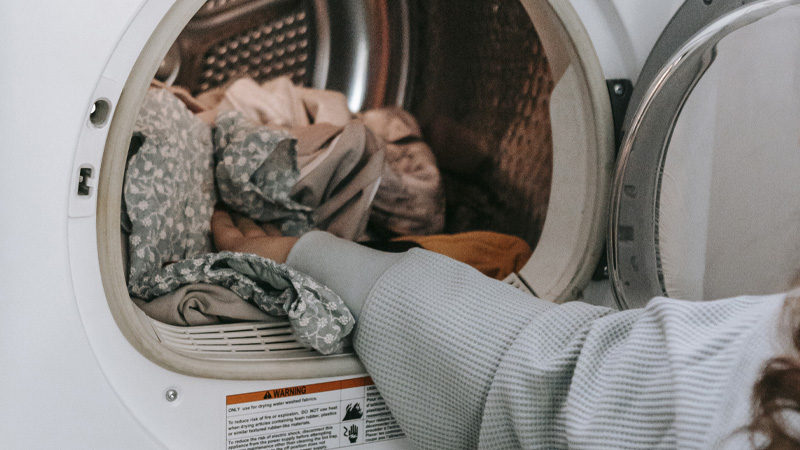
Washing bark cloth requires special care to preserve its unique texture and prevent damage.
Here are some guidelines on how to wash bark cloth
Hand Wash
Always hand wash bark cloth instead of using a washing machine. This will prevent the fabric from being agitated too much, which can lead to fraying or weakening of the fibers.
Use Cold Water
Use cold water for washing, as hot water can shrink and damage the fabric.
Gentle Detergent
Choose a mild and gentle detergent suitable for delicate fabrics. Avoid harsh chemicals and bleach, as they can harm the natural fibers.
Soak Briefly
Submerge the bark cloth in the water and gently swish it briefly, allowing the detergent to penetrate the fibers.
Avoid Scrubbing
Refrain from scrubbing or rubbing the fabric vigorously to prevent damage.
Rinse Carefully
Thoroughly rinse the bark cloth with clean, cold water until all detergent is removed.
Squeeze Gently
Gently squeeze out excess water, but avoid wringing or twisting the fabric, as it can cause distortion and weakening of the fibers.
Air Dry
Lay the bark cloth flat on a clean towel and roll it up to absorb more moisture. Then, carefully unfold it and lay it flat on a dry rack or a clean surface.
Avoid hanging it, as the weight of the water can stretch the fabric.
Avoid Sunlight
Keep the bark cloth away from direct sunlight during drying, as it can fade and weaken the fabric.
Iron With Care
Iron the bark cloth on the lowest setting while still slightly damp to avoid excessive heat.
How to Care for Barkcloth?
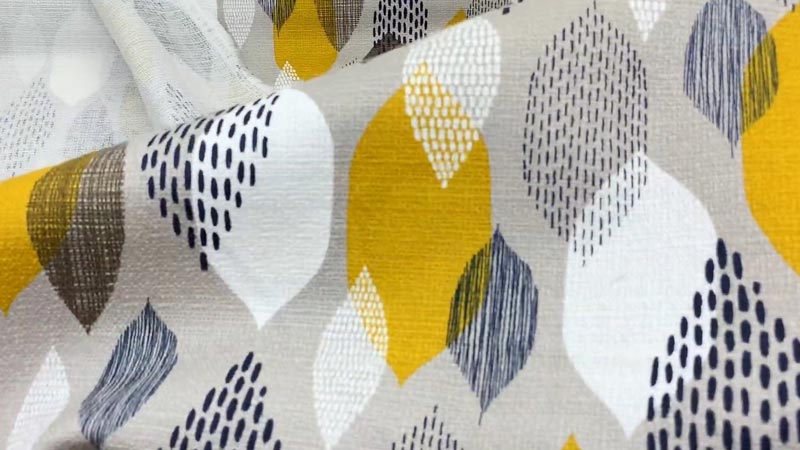
Caring for bark cloth involves taking special precautions to preserve its unique texture and ensure its longevity.
Here are some essential tips on how to care for bark cloth
Avoid Machine Washing
Always hand wash bark cloth instead of using a washing machine to prevent damage and maintain its delicate fibers.
Use Cold Water
Wash bark cloth in cold water to prevent shrinkage and preserve the fabric’s texture.
Gentle Detergent
Use a mild and gentle detergent suitable for delicate fabrics to avoid harsh chemicals that can harm the natural fibers.
Handle With Care
Be gentle when washing and handling bark cloth to avoid fraying or weakening the fabric.
Avoid Bleach and Harsh Chemicals
Please refrain from using bleach or harsh cleaning agents, which can damage the fabric’s fibers.
Air Dry
Lay the washed bark cloth flat on a clean towel and roll it up to absorb excess water. Then, carefully unfold and air dry it on a drying rack or a clean, dry surface.
Avoid hanging it, as the weight of the water can stretch the fabric.
Store Properly
When not in use, store bark cloth in a cool, dry place away from direct sunlight to prevent fading and damage.
Handle With Clean Hands
When handling bark cloth, ensure your hands are clean to avoid transferring dirt or oils onto the fabric.
Avoid Sharp Objects
Keep bark cloth away from sharp objects that can snag or tear the delicate fibers.
Light Ironing
If necessary, iron the bark cloth on the lowest setting while still slightly damp to smooth out wrinkles. Place a clean cloth between the iron and the fabric to avoid direct contact.
Display With Care
When using bark cloth for decorative purposes, ensure it is displayed away from direct sunlight or areas prone to moisture.
How to Sew Barkcloth?
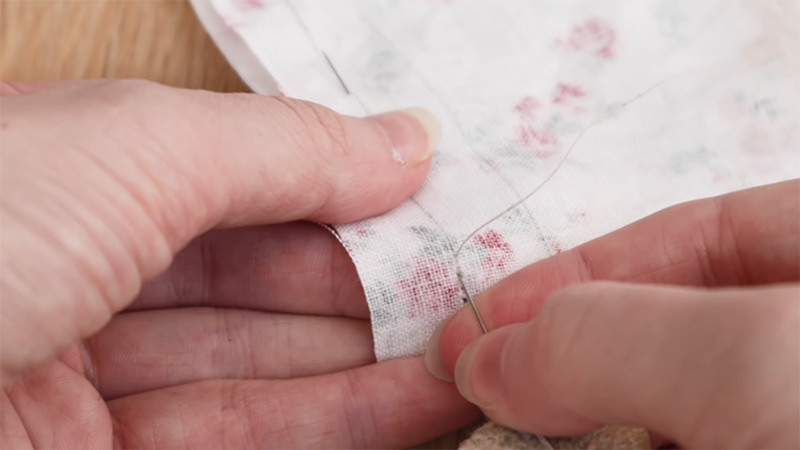
Sewing barkcloth requires some considerations due to its unique texture and thickness. . .
Here’s a guide on how to sew barkcloth
Use the Right Needle and Thread
Choose a heavy-duty needle, such as a denim or upholstery needle, to accommodate the thickness of the fabric. Use a sturdy thread that matches the color of the barkcloth.
Preparing the Fabric
Before sewing, wash and dry the barkcloth following the care instructions mentioned earlier. Iron it on the lowest setting to remove wrinkles, but be careful not to apply too much heat.
Cut With Sharp Scissors
Use sharp scissors to cut the barkcloth, ensuring clean and precise edges.
Pinning the Fabric
Use stainless steel or T-pins to pin the fabric together. The rough texture of barkcloth can make it challenging to use regular pins.
Sew With Care
Slowly and steadily, sew the barkcloth, ensuring the fabric feeds evenly through the machine. Take your time and avoid rushing to prevent mistakes or uneven stitching.
Backstitch at the Beginning and End
Backstitch at the beginning and end of each seam to secure your stitches.
Seam Finishes
You can use zigzag stitches or pinking shears to finish the raw edges and prevent fraying.
Avoid Too Many Layers
Barkcloth can be thick, so avoid sewing too many layers together as it may become challenging to sew through.
Pressing
After sewing, use a pressing cloth and a low iron setting to press the seams open or to one side. Avoid pressing directly on the barkcloth to prevent damage.
Try a Test Piece
If you’re new to sewing with barkcloth, consider doing a test piece to practice and get familiar with the fabric.
Is Bark Environmentally Friendly?
Yes, barkcloth is considered environmentally friendly due to its sustainable production process. It is made from the inner bark of specific trees, which are not cut down for the fabric, ensuring the trees continue to grow and contribute to the ecosystem.
The bark stripping process also promotes regrowth, making it a renewable resource. The barkcloth production involves minimal use of chemicals and energy compared to traditional weaving methods, reducing its carbon footprint.
Its biodegradable nature further contributes to its eco-friendliness, making it a preferred choice for those seeking sustainable and ethical textiles.
Disadvantages of Bark Cloth
The disadvantages of bark cloth include
- Limited Availability: Barkcloth is primarily produced in regions with abundant specific tree species like paper mulberry, ficus, and elm. This limited availability may make it challenging to find in other parts of the world.
- Durability: A sturdy barkcloth may not be as durable as synthetic or tightly woven fabrics. It can be susceptible to tearing or fraying, especially with improper handling or washing.
- Care Requirements: To maintain its unique texture and appearance, Barkcloth requires special care, including handwashing and air drying. This may be more time-consuming and unsuitable for those looking for low-maintenance fabrics.
- Cost: Authentic, handmade barkcloth can be relatively expensive due to the labor-intensive process and the limited availability of skilled artisans. This may make it less accessible to some consumers.
- Color Fading: Over time, barkcloth may experience color fading, especially when exposed to direct sunlight or harsh washing methods.
- Limited Design Options: The natural texture of the barkcloth may not be suitable for all design aesthetics. Its rough surface and specific coloration may limit its use in particular fashion or interior design applications.
- Sensitivity to Moisture: Barkcloth can be sensitive to moisture and may not be ideal for areas prone to high humidity or dampness.
- Pilling: Depending on the specific type and quality of the fabric, barkcloth may be prone to pilling, forming small balls of fibers on the surface after prolonged use.
Comparison Table Between Barkcloth and Other Fabrics
| Property | Barkcloth | Linen | Jute | Hemp |
|---|---|---|---|---|
| Source | Inner bark of trees | Flax plant | Jute plant | Hemp plant |
| Texture | Slightly rough | Slightly rough | Coarse and rough | Coarse and rough |
| Eco-friendly | Yes | Yes | Yes | Yes |
| Sustainability | Renewable resource | Renewable resource | Renewable resource | Renewable resource |
| Production Method | Non-woven | Woven | Woven | Woven |
| Strength | Strong and durable | Strong and durable | Durable | Durable |
| Breathability | Good | Excellent | Excellent | Excellent |
| Absorbency | Good | High | High | High |
| Wrinkle Resistance | Moderate | Moderate | Low | Low |
| Cost | Can be expensive | Moderate | Affordable | Affordable |
| Availability | Limited availability | Widely available | Widely available | Widely available |
| Uses | Clothing, home decor, ceremonial items | Clothing, home decor, upholstery | Sacks, rope, rugs, home decor | Clothing, home decor, rope |
FAQs
While the barkcloth is durable and eco-friendly, it may not be the best choice for prolonged outdoor use. Exposure to harsh weather conditions, moisture, and UV rays can lead to fading and degradation over time.
Yes, barkcloth can be dyed using natural pigments and dyes. However, due to its unique texture and composition, the dyeing process may yield different results than traditional woven fabrics.
Barkcloth is generally hypoallergenic as it is made from natural plant fibers and does not contain synthetic materials or chemicals that may trigger allergies. However, individual sensitivities can vary, so testing a small patch before prolonged use is best.
Properly cared for barkcloth should not significantly shrink when handwashed in cold water. However, like any fabric, it is essential to follow the care instructions to avoid potential shrinkage.
Yes, barkcloth can be used for upholstery due to its durability and textured surface. However, it is essential to consider the specific design and intended use, as its rough texture may not be suitable for all upholstery projects.
To Recap
Barkcloth stands as a remarkable fabric with a rich history and unique properties. Crafted from the inner bark of specific trees, its non-woven nature, slightly rough texture, and eco-friendly production process set it apart from conventional textiles.
Throughout the ages, artisans from various cultures have cherished and preserved this ancient craft, using it for clothing, home decor, and ceremonial items.
While barkcloth requires special care and may have limitations, its cultural significance, sustainability, and aesthetic appeal continue to captivate modern enthusiasts.
As we embrace sustainable practices and revive traditional crafts, barkcloth’s enduring legacy remains a testament to the harmonious relationship between humanity and nature.
Leave a Reply